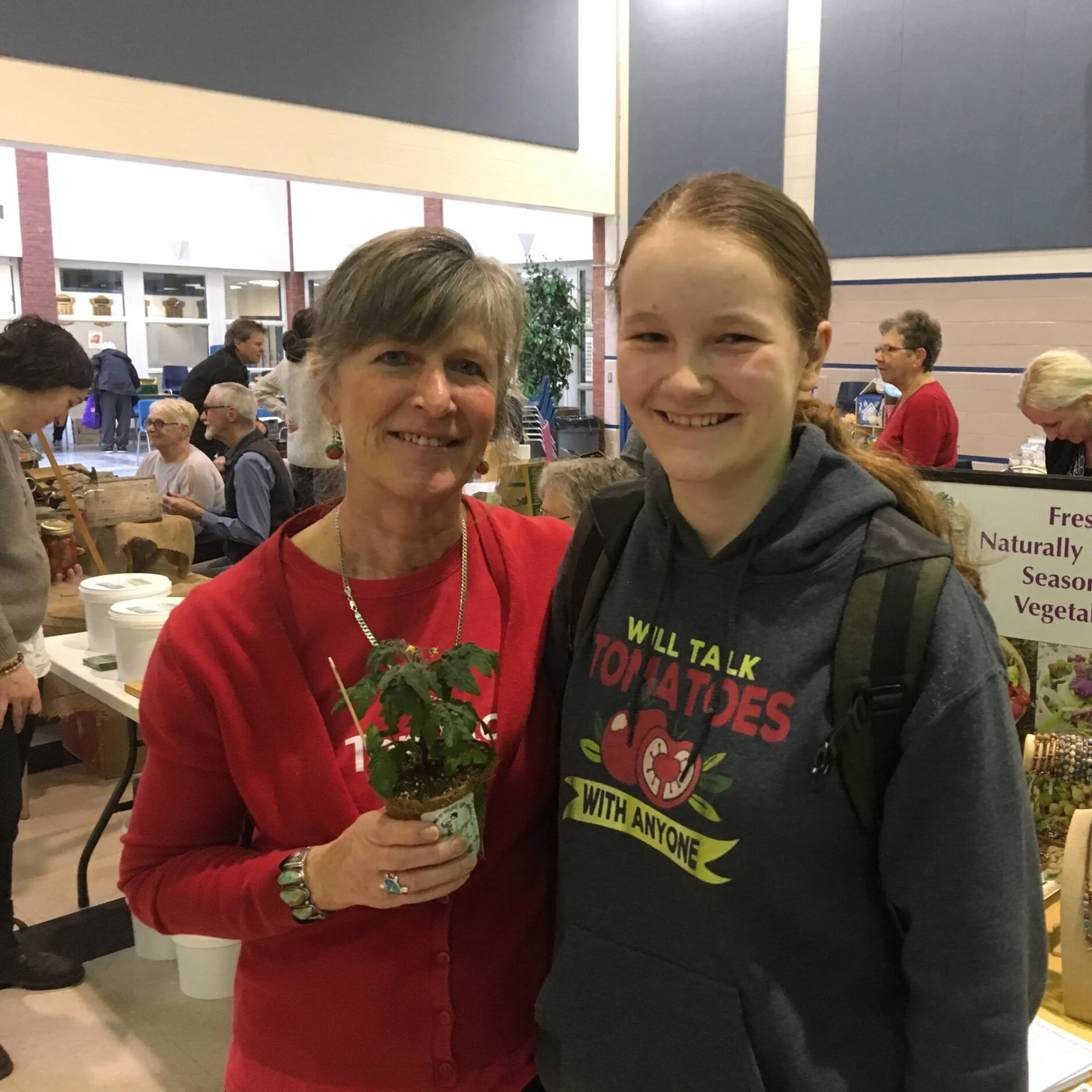Heirloom vegetable grower and tomato expert Linda Crago joins us to talk about seed lingo, saving seeds—and sharing seeds.
An avid seed-saver, she concedes that she has a whole freezer dedicated to seeds alone.
Crago operates Tree and Twig Heirloom Vegetable Farm in the Niagara Region of Ontario. She also organizes an annual Seedy Saturday seed swap and event in her community.
Linda Crago with Emma at a Seedy Saturday
Crazy for Tomatoes
Every spring gardeners from far and wide trek to her farm for her annual Tomato Days sale—where she has transplants for over 500 tomato varieties.
Crago says there’s lots happening in the world of tomatoes—and that in the past 10 years there has been more change since people started growing them to eat.
Seed Lingo
Hybrid: Crago explains that hybrids can occur naturally. While some hybrids are known for disease resistance, hybrid varieties are not the best choice for home gardeners who want to save seed. That’s because seeds from hybrids won’t be like the plant they came from.
Heirloom: She says that heirlooms are varieties with a history and a story. They have been around for a long time; 50 years is a common guideline when calling a variety an heirloom.
Open Pollinated: These are stable varieties that give seeds like the parent plant (as long as they have not cross-pollinated with a nearby plant.) While all heirlooms are open pollinated, not all open-pollinated varieties are heirlooms.
Artisan: These are newer open-pollinated varieties with special taste or unique appearance.
Hybrid Heirlooms: This term is used by some seed companies to refer to hybrids that look like an heirloom. Crago explains that heirlooms are always open pollinated, making this a misleading label.
Crago points to newer open-pollinated varieties such as some of the blue tomatoes…they’re not heirlooms now, but who knows, maybe they will be in 50 years.
Saving Seeds
Crago says that it’s not necessary to buy new seed every year. Seeds for some crops, such as parsnip, do have a shorter life, but she says that with proper storage, it’s usually possible to get more than one year from a batch of seed.
If in doubt, she recommends doing a seed viability test. Simply put seeds in damp paper towel within a sealed bag, in a warm location. After a few days, check to see how many of the seeds have germinated.
“One of the ways we keep open-pollinated varieties in existence is by growing and eating them.”
Seed Exchanges and Seed Libraries
Crago says that the first seed library in Canada was in the nearby Grimsby Public Library.
She says it’s not uncommon to hear stories at seed exchanges: seeds often come with the story of how they were brought from another country by a relative—and the people sharing them are hoping that someone will keep the variety going.
“The stories are the best and the varieties you get are the best.”
Connect with Linda Crago
Website: treeandtwig.squarespace.com
Facebook: treeandtwig
Instagram: treeandtwig


